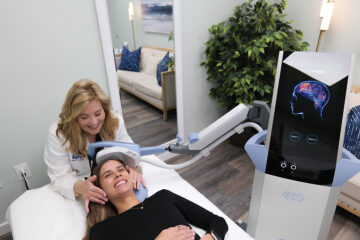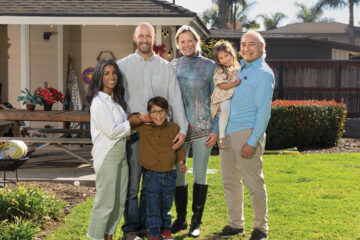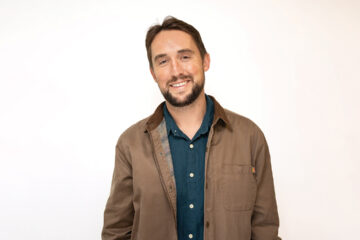Mid-Life Tune-Up

The alarm sounded sharply in the wee hours of the morning. Bleary-eyed, I dragged my body out of bed and into my workout clothes for the pre-drawn drive to La Jolla. Despite the early hour, I enjoyed the quiet. The world was not yet awake, nor was Interstate 5 clogged with cars. I felt a rare moment of peace, as well as anticipation. I was on my way to my mid-life tune-up, the perfect prescription for too many commitments and too little sleep, the result of often daunting demands on a woman’s life.
My story is typical of so many women who are caught up in competing challenges, from the teenager applying to colleges to the elderly mother-in-law needing more care. My recently retired husband was in the middle, wondering where on earth his wife had gone. I was just trying to do what so many women do, juggling family, career, volunteer work, laundry, dirty dishes, paying bills, shopping, wrapping Christmas presents, getting ready for house guests, and decorating the house for the holidays. Needless to say, I was overwhelmed by a list as long as Santa’s. More and more, I was feeling like the shrewish, out-of-control mom in Malcolm in the Middle. Something had to give, and it probably was me.
In short, I needed a new me in the New Year, time to focus not only on my own health but also how to cope with the needs of those I love. So I made an appointment at La Jolla’s Scripps Center for Executive Health, which I had profiled 18 years earlier as an anchor and reporter at KFMB-TV for a series on how to live a longer, healthier life. I learned that over the years, the center’s mission hasn’t changed: providing a one-stop shop for efficient, cutting-edge care, designed for early detection and prevention of disease. “For most people, they’re looking for more of a comprehensive, expedient experience and that’s what we do here,” says program director James Tuck. “That’s our niche, to bring it all to you under one roof and in one visit.” Patients pay directly for services, although companies often pick up the tab for busy executives.
While patients are mostly men, medical director Scott Carstens says the center is seeing more women who, like me, are trying to balance competing demands with their own well-being. “Oftentimes with our female patients and clients, we find that they are very facilitative to the needs of others, but oftentimes not as much to themselves,” he says. “So oftentimes we entertain the whole issue of saying no to others and yes to themselves.”
After filling out a detailed 30-page questionnaire about health history, physical activity, nutrition, and coping styles, my day began with a blood test and a consultation with Greg Babikian, MD, a trim, well-spoken physician who discussed my family history and conducted a thorough physical. A treadmill test measured heart rate, blood pressure, and fitness level. Harold Shively, MD, a veteran cardiologist, supervised the test and stressed there is no magic bullet for weight loss. That old rule “eat less and exercise more” still applies.
But what you eat or don’t eat does matter. Dietitian Katie Clark told me I wasn’t eating nearly enough whole grains, fruit, beans, and other sources of dietary fiber for good health. Look for the word “whole” in the first ingredients on food labels, she advises, and if it doesn’t say 100% whole wheat on bread products, it’s just white flour with brown food coloring and a few nutrients. Bottom line, there’s no fiber. Avoid so-called health bars that are little more than fat and sugar. She recommends Kashi products, made with whole grains that are high in fiber and low in calories.
Clinical coordinator Stephanie Ventrella did a body composition assessment, figuring out the ratio of lean mass to fat mass, a better measure of health than the numbers you see on the scale. Excess body fat can lead to heart disease, type II diabetes, and other problems. Elaine Hassebrock advised me to step up my leisurely walks to boost metabolism and burn more calories, recommending 30 minutes a day, five days a week, along with specific exercises for problem areas to increase strength, balance, and flexibility.
During psychological counseling, Karen Hall, PhD stressed the importance of sound sleep as the basis for good health. “Sleep should be thought of as the rejuvenating part of our day, mentally and physically,” she says, so make sure to create a peaceful environment. Your bedroom should be for sleep or sex.
No TV. And if you can’t sleep, get up and do something that isn’t stimulating, she advises. Don’t toss and turn. Limit alcohol not only for sound sleep but disease prevention (one to two glasses tops). Nicole Friedman, PhD spoke of the powerful connection between mind and body, and explained how thoughts and emotions can play a key role in our health. She demonstrated deep breathing exercises to relieve anxiety and tension, and recommended yoga not only for exercise, but to calm the mind.
A final report sums up the findings of my WholePerson Examination, as it’s called, with recommendations for further tests and a follow up with my own physician, a blueprint for healthy living and prevention. Feeling renewed, and armed with invaluable information, I resolve this New Year to put good health at the top of my list. You can’t help others if you don’t take care of yourself. (858/626-4460, www.executivehealth.org) ANDREA NAVERSEN
On Thursday, January 27, from 10am-2pm, Ranch & Coast Magazine presents the second annual Health & Beauty at The Inn, an interactive expo featuring health and beauty leaders, fitness experts, local spas, salons, boutiques, nutritionists, and more. Enjoy a new year, new you revitalization and spa-cuisine buffet lunch by The Inn at Rancho Santa Fe’s executive chef John Beriker. For complete information and a list of participants who have signed on thus far, please click here.








Comments